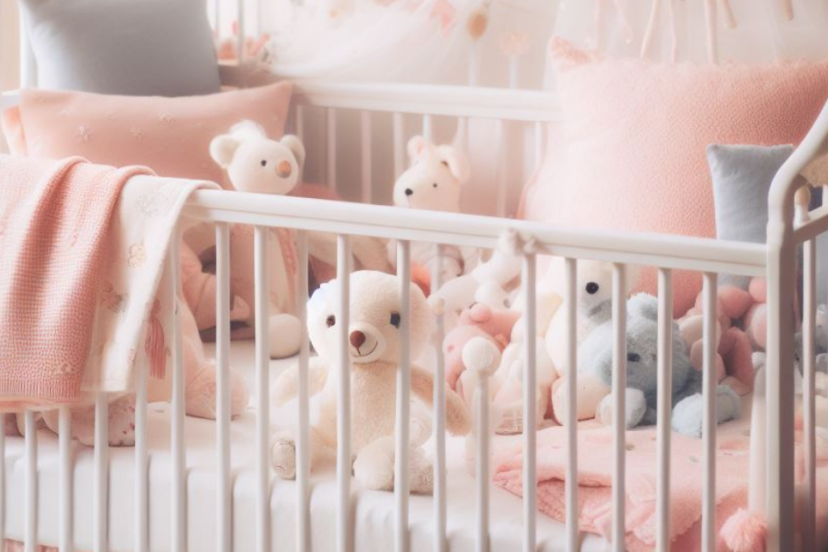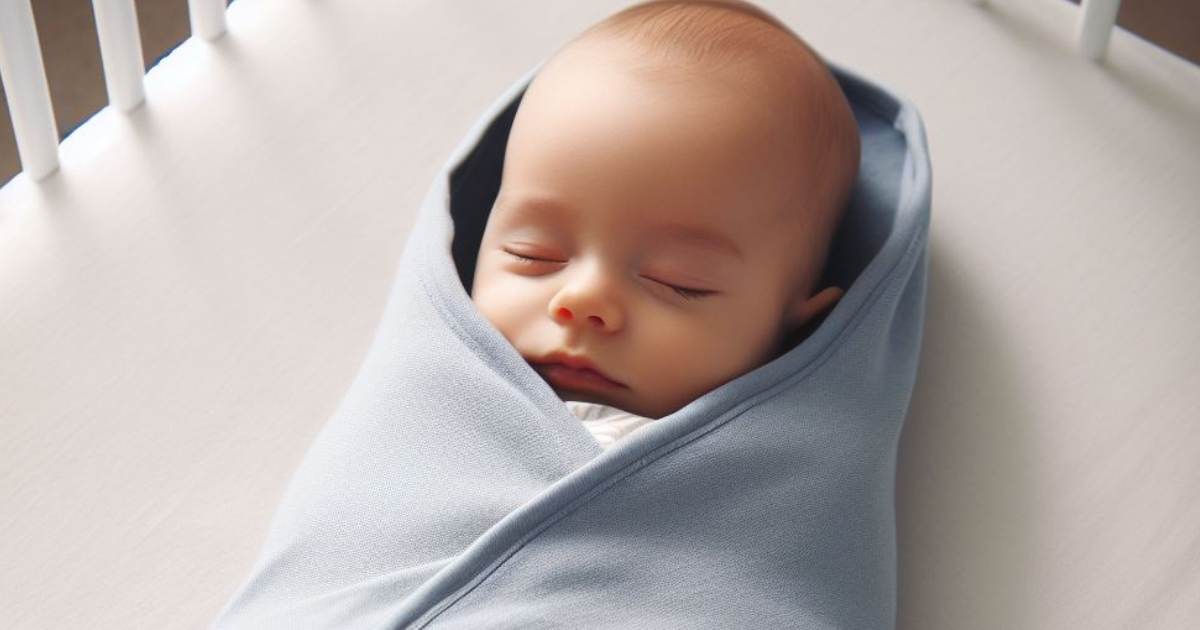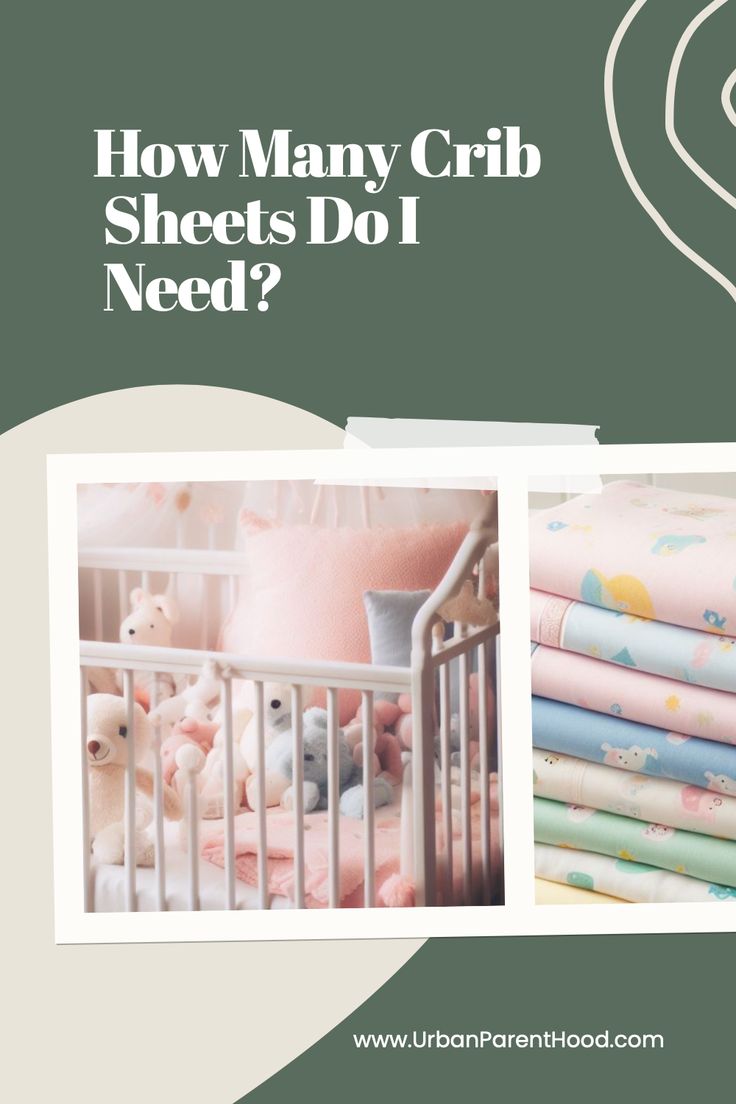How Many Crib Sheets Do I Need? Your Ultimate Guide
Crib sheets are an essential part of every baby’s nursery, offering both comfort and practicality. One question that often arises for new parents is, “How many crib sheets do I need?” The answer isn’t one-size-fits-all; it depends on various factors. In this guide, we’ll walk you through the considerations, guidelines, reviews, and personal experiences to help you make an informed decision.
Factors to Consider When Determining the Number of Crib Sheets
– Laundry Frequency: If you’re comfortable with more frequent washing, you can get away with fewer sheets.
– Baby’s Habits: A baby who spits up frequently might require more sheets than one who rarely does.
– Mess Potential: Consider potential messes during diaper changes and nighttime accidents.
– Climate: Warmer climates might lead to more frequent sweating and changes.
Figuring out how many crib sheets you need might feel like a puzzle, but there’s a practical rule of thumb that can guide you through this decision. I’ve got your back – here’s a simple approach to help you find that sweet spot.
The Rule of Three:
As a general rule, having at least three crib sheets is a great starting point. This magic number accounts for the inevitable messes that come with babies, from diaper leaks to unexpected spit-ups. With three sheets on rotation, you’ll always have a fresh, clean surface at hand.
Factor in Laundry Frequency:
Now, think about your relationship with laundry. If you’re a laundry aficionado and don’t mind frequent washes, you might even get away with two sheets. On the other hand, if laundry isn’t exactly your favorite pastime, having four to five sheets can help you navigate those weeks when time gets away from you.
Special Circumstances:
Consider any special circumstances in your life. Do you live in a humid climate where sweating is more frequent? Or perhaps your baby has a knack for turning naptime into art time. In these cases, leaning towards the higher end of the sheet count spectrum is a smart move.
Multiples and Backups:
If you’re a parent of twins or multiples, double the number of sheets in your rotation. Two babies often mean double the mess, so having extra sheets ensures that both little ones stay comfortable.
Remember, while this rule of thumb is a solid starting point, there’s no one-size-fits-all answer. Trust your instincts and your knowledge of your baby’s habits. Ultimately, your goal is to strike the perfect balance between comfort, convenience, and preparedness. By considering these factors, you’ll find the ideal number of crib sheets that keeps both you and your baby smiling.
Guidelines for Choosing the Right Crib Sheet Quantity
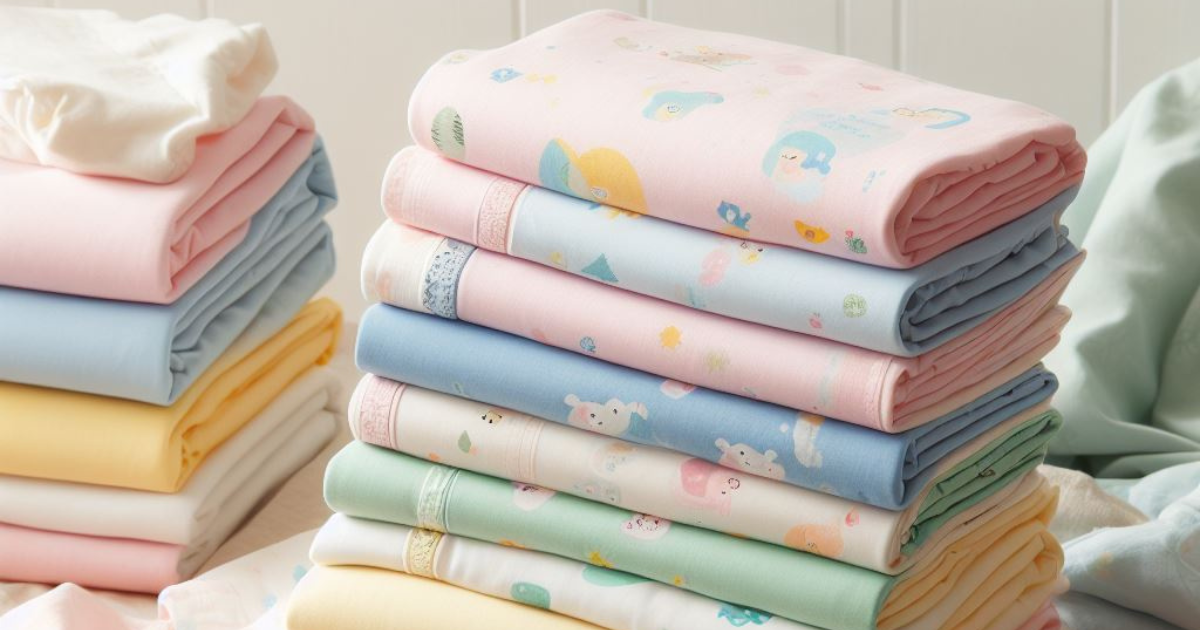
To strike the right balance, follow these guidelines:
– Have a minimum of 2-3 crib sheets for rotation.
– If laundry is infrequent, consider 4-5 sheets.
– Factor in how often you want to do laundry.
As a parent who’s been there, I understand the crib sheet conundrum. Let me share some practical guidelines to help you master the art of selecting the ideal number of crib sheets. Together, we’ll ensure your baby’s sleep zone is both cozy and crisis-proof.
The Starter Set:
Begin with at least two to three crib sheets in your rotation. This baseline number guarantees you’re never caught empty-handed during a sudden sheet swap. If you’re a laundry maestro, two sheets could suffice, but for most of us, three provides peace of mind.
Extra is Essential:
Strategically plan for the unexpected by adding one or two extra crib sheets to your collection. This brings your total to four or five. Believe me, those midnight messes become way less daunting with a spare sheet ready to go.
Laundry Interval Matters:
Assess your laundry frequency. Frequent laundry? Lean towards the lower end of the range. Spacing out laundry days? Embrace those extra sheets. No more panicked laundry dashes while your baby looks on, blissfully unaware.
Tackling Twins or More:
If you’re parenting multiples, double up on the sheet count. Start with eight sheets. Twins mean double the joy, but let’s face it, sometimes it also means double the mess. Stay ahead with ample supplies.
Fit for Your Lifestyle:
Your unique lifestyle influences your sheet needs. On-the-go parents might consider a larger stash due to more adventures. If you’ve got routines mastered, you can lean toward a slightly smaller quantity.
Remember, these guidelines are your crib sheet compass, steering you toward comfort and preparedness. The aim is to strike a balance that suits your life. Armed with these tips, you’re all set to navigate the world of crib sheet quantities like a seasoned pro.
10 Types of Crib Sheet Materials Suitable for Babies
When it comes to crib sheet materials, not all fabrics are created equal. Let’s explore 10 materials perfect for your baby’s sensitive skin.
1. Cotton:
– Pros: Breathable, soft, easy to wash.
– Cons: Prone to wrinkling, might shrink in hot water.
– Winner: An all-time favorite for its comfort and versatility.
2. Organic Cotton:
– Pros: Free from harmful chemicals, eco-friendly.
– Cons: Slightly pricier, limited pattern choices.
– Winner: A winner for eco-conscious parents.
3. Bamboo:
– Pros: Hypoallergenic, moisture-wicking, eco-friendly.
– Cons: Can be expensive, requires delicate washing.
– Winner: A champ in breathability and sustainability.
4. Flannel:
– Pros: Cozy, perfect for colder months.
– Cons: Might be too warm for warmer seasons.
– Winner: Ideal for chilly nights.
5. Jersey Knit:
– Pros: Stretchy, feels like a soft t-shirt.
– Cons: Prone to pilling, might not fit snugly on thicker mattresses.
– Winner: A cozy choice for a snug fit.
6. Microfiber:
– Pros: Stain-resistant, durable.
– Cons: Less breathable, might trap heat.
– Winner: A tough contender for durability.
7. Linen:
– Pros: Breathable, gets softer with each wash.
– Cons: Wrinkles easily, might be rough initially.
– Winner: A natural, airy option.
8. Silk:
– Pros: Luxurious, hypoallergenic, regulates temperature.
– Cons: Expensive, requires special care.
– Winner: Unmatched in elegance and comfort.
9. Polyester Blend:
– Pros: Affordable, wrinkle-resistant.
– Cons: Less breathable, might retain odors.
– Winner: A budget-friendly option.
10. Muslin:
– Pros: Lightweight, breathable, gets softer with use.
– Cons: Can be thin, might require multiple layers.
– Winner: Perfect for swaddle-like comfort.
Best Material Overall for Babies: When considering comfort, durability, and safety, organic cotton emerges as the top choice. Its softness, combined with its lack of harmful chemicals, make it a winner for babies’ delicate skin.
Personal Experiences and Recommendations
From a parent’s perspective:
– Always keep a spare sheet within arm’s reach.
– Aim for at least 3-4 crib sheets for convenience.
– Have an extra waterproof mattress protector.
Alright, fellow parents, it’s story time – my personal journey with crib sheets, spills, and sleepy smiles. I’ve been through the trenches of babyhood, and I’m here to share some insights and recommendations that might just make your crib sheet adventure a tad smoother.
Always Keep a Spare:
Picture this – a sudden diaper change turns into a surprise “arts and crafts” session. That’s when having an extra crib sheet within arm’s reach becomes your superhero cape. Trust me, you’ll thank yourself for that spare sheet in those unexpected moments.
Quantity is Key:
Based on my experiences, having a minimum of 3-4 crib sheets in rotation can be a game-changer. Babies have this uncanny knack for making a mess just when you’ve changed the sheet. With a couple of extras, you’re prepared for their impromptu performances.
Meet the Waterproof Protector:
Let’s talk about backup for your backup – the waterproof mattress protector. This unsung hero has saved my sanity more times than I can count. It adds an extra layer of defense against messes, extending the life of your sheets.
Material Matters:
In the world of crib sheets, materials make all the difference. Opt for soft, breathable fabrics that can withstand frequent washes. Trust me, you’ll appreciate the durability when your baby discovers the joys of self-expression through pureed peas.
Quick Changes are a Win:
Imagine this scenario – it’s 2 a.m., and you’re juggling a tired baby and a sleepy brain. This is where fitted crib sheets shine. They slip onto the mattress like a dream, ensuring a snug fit even in your half-awake state.
Embrace Backup Layers:
Don’t stop at just crib sheets. Consider having a few layers underneath. A waterproof pad or an absorbent cloth can save you from stripping the entire crib in the middle of the night.
Patterns and Colors:
When choosing sheets, don’t be shy about adding a splash of personality to the crib. Colorful patterns not only brighten up the room but also provide visual stimulation for your baby.
The Midnight Change:
If your baby’s diaper leaks during the night, a quick sheet change can mean the difference between a peaceful return to sleep and a cranky wake-up call. Keep a dim light near the crib for those middle-of-the-night swaps.
Storage Hacks:
When it’s time for a sheet change, you don’t want to be digging through piles of linen. Consider rolling up sheets and storing them inside the crib mattress for easy access.
Comfort Trumps All:
Above all, prioritize comfort. Your baby’s sleep environment should be a haven of coziness. So, choose materials that feel gentle against their delicate skin.
Remember, my experiences might differ from yours, but the joy (and mess) of parenting is universal. Find what works for you, and remember that there’s no such thing as too many crib sheets. Happy sheeting, fellow parents!
Understanding the Durability and Material of Crib Sheets
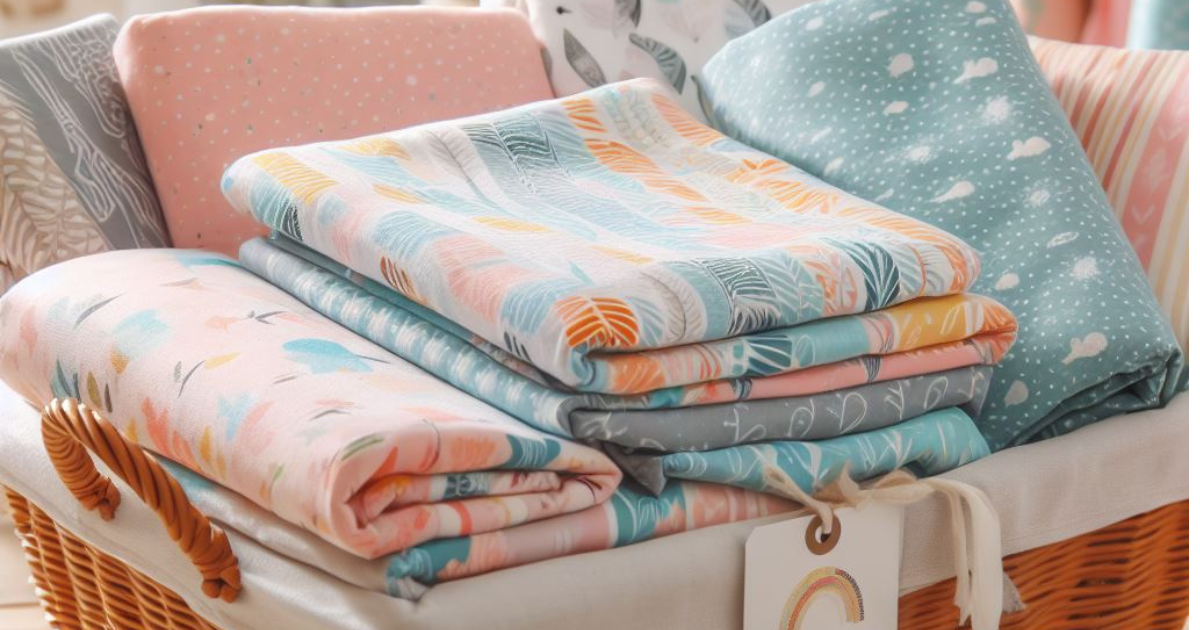
– Opt for materials like cotton or bamboo for breathability.
– Look for high thread counts for added durability.
– Read labels for washing instructions to maintain longevity.
Let’s dive into the world of crib sheet materials – it’s like exploring a treasure trove of comfort and durability. Having been down this road myself, I’m excited to share insights on different materials, their pros and cons, and how to choose the perfect one for your baby’s crib.
The Comfort Connection:
When it comes to materials, comfort is king. Think softness that makes you want to snuggle up yourself. Organic cotton, bamboo, and jersey knit are materials that offer a heavenly touch against your baby’s skin.
Decoding Durability:
Crib sheets go through quite a bit – washes, spills, tugs, and more. That’s where durability comes into play. Look for materials like percale cotton and microfiber that can withstand frequent laundering and still come out looking fresh.
Cotton Champion:
Ah, cotton – the classic choice. It’s breathable, gentle on sensitive skin, and easy to care for. Plus, it gets softer with every wash. However, be wary of thread count. A higher count often indicates better quality and longevity.
Bamboo Brilliance:
Bamboo has stepped into the spotlight as an eco-friendly option. It’s moisture-wicking, making it great for hot sleepers, and its natural antibacterial properties keep things fresh. Just remember to check washing instructions to maintain its integrity.
The Lure of Linen:
Linen is a breath of fresh air, literally. It’s airy, absorbent, and perfect for warmer months. While it wrinkles more easily, its natural texture adds a touch of elegance to the nursery.
The Microfiber Marvel:
Microfiber is a tech-savvy choice. It’s stain-resistant, durable, and can handle spills like a champ. However, it’s not the most breathable option, so keep that in mind if you’re in a warmer climate.
Organic Wonders:
Organic materials, like organic cotton and bamboo, are like a guilt-free treat for your baby’s skin. They’re free from harmful chemicals and toxins, ensuring a safer sleep environment.
Getting Cozy with Flannel:
Flannel is your go-to for chilly nights. It’s cozy and snug, perfect for the colder seasons. Just be mindful that it might not be the best choice for hotter months.
Finding the Right Fit:
The material’s fit is as crucial as its feel. Make sure the sheet fits snugly around the mattress without any wrinkles. This not only looks neat but also prevents any safety hazards.
Seeking Certification:
Keep an eye out for certifications like GOTS (Global Organic Textile Standard) or OEKO-TEX, which ensure that the material has been tested for harmful substances.
Remember, the material you choose impacts both comfort and durability. Your baby’s sensitive skin deserves the best, so pick a material that checks all the boxes – softness, safety, and lasting power. Your crib sheet quest is about to get even more exciting!
Tips for Maintaining and Cleaning Crib Sheets
– Wash with gentle detergents to avoid skin irritations.
– Dry sheets on low heat to prevent shrinkage.
– Address stains promptly to prevent them from setting.
Let’s talk about a topic that’s all about keeping things fresh and clean in the baby zone – maintaining and cleaning those trusty crib sheets. As a fellow parent who’s been in the trenches (and faced a fair share of messy situations), I’ve rounded up some tried-and-true tips to help you navigate the world of sheet care with ease.
Routine is Key:
First things first – set up a routine for changing and washing crib sheets. Aim for at least once a week, or more frequently if needed. Babies have a knack for surprising us with messes, so a regular schedule helps you stay ahead.
Pre-Wash New Sheets:
Before your new sheets even meet the crib, give them a pre-wash. This helps remove any lingering chemicals and softens the fabric for that extra touch of comfort.
Choose Gentle Detergents:
Opt for baby-friendly, hypoallergenic detergents. Avoid those heavy on fragrances or additives that might irritate your baby’s sensitive skin.
Cold Water, Please:
When washing, go for cold water. It’s gentler on fabrics and helps maintain colors and patterns.
Stain Battles:
For stubborn stains, tackle them as soon as possible. A mixture of mild soap and cold water usually does the trick. Avoid harsh stain removers that might damage the fabric.
Separate or Not?
Whether to wash crib sheets separately or with other baby clothes is a common question. While it’s not a strict rule, keeping them separate can prevent snags and ensure they’re getting the care they deserve.
Say No to Fabric Softeners:
Skip the fabric softeners and dryer sheets. They might leave behind residues that can irritate your baby’s skin.
Sun-Kissed Freshness:
If the weather allows, hang your crib sheets in the sunlight. Sunlight naturally kills bacteria and freshens up fabrics.
Gentle Drying:
When it comes to drying, opt for low heat settings or air-drying to prevent shrinkage and preserve the fabric’s integrity.
Storage Strategies:
When storing crib sheets, ensure they’re completely dry to prevent mildew. Consider using airtight containers or vacuum-sealed bags to maintain freshness.
Backup Sheets are Lifesavers:
It’s always a good idea to have extra crib sheets on hand. This way, you can rotate while some are in the wash, and you’re never caught sheetless during a surprise change.
Remember, the journey of maintaining and cleaning crib sheets is about ensuring a cozy, clean, and safe sleep environment for your baby. With these tips in your back pocket, you’re well-equipped to handle whatever messes come your way.
Using Crib Sheet Alternatives Effectively
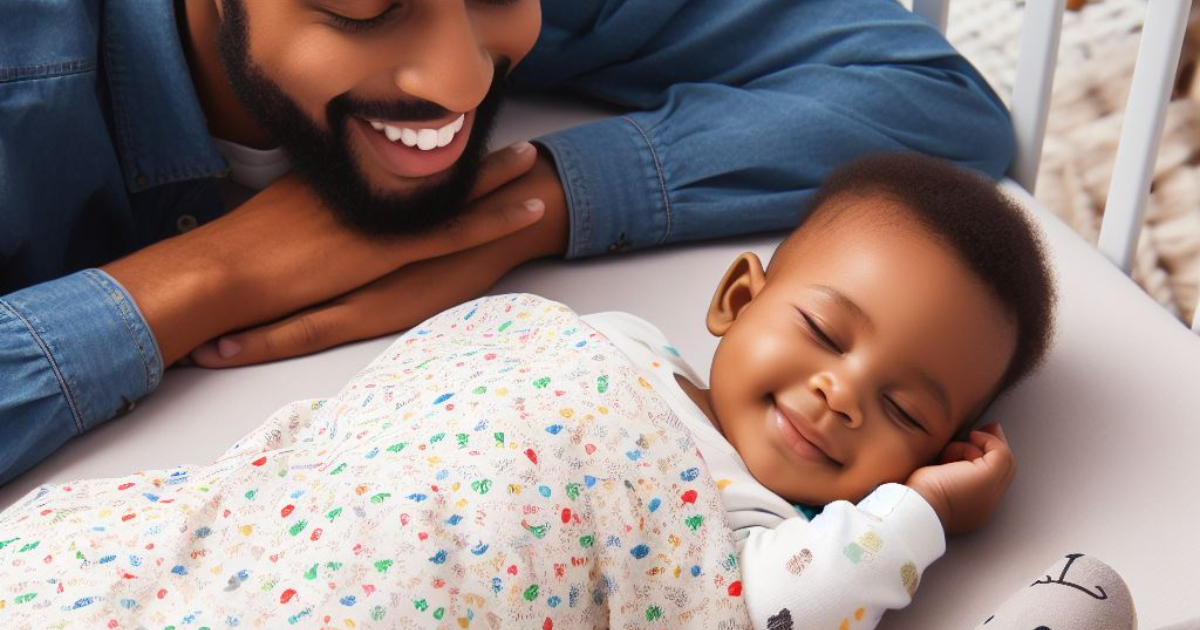
– Sleep sacks: Easy to change and maintain.
– Waterproof overlays: Protect the mattress while reducing sheet changes.
– Multi-layered fitted sheets: Allow quick removal of the top layer for a fresh surface.
Let’s talk outside the crib – crib sheet alternatives that can be real game-changers in certain situations. As a parent who’s embraced creativity and flexibility, I’m excited to share some savvy alternatives that can come to the rescue when traditional crib sheets aren’t the best fit.
1. Waterproof Mattress Protectors:
These are like the unsung heroes of the crib world. Not only do they shield the mattress from accidents, but they also provide a comfy sleeping surface. Just add a soft blanket on top, and you’re good to go.
2. Fitted Bassinet Sheets:
If you’re using a bassinet or a co-sleeper, fitted bassinet sheets can often do the trick for crib-sized mattresses. They’re snug and secure, ensuring your baby’s sleep is undisturbed.
3. Muslin Swaddle Blankets:
These lightweight wonders are versatile. You can fold them to size and create a cozy sleeping area. Just make sure they’re tucked securely around the mattress.
4. Playpen Sheets:
If your baby’s crib is a playpen during travel or outings, playpen sheets can fit the bill. They’re designed to fit snugly and provide a familiar sleeping environment.
5. Soft Baby Blankets:
Lay a soft baby blanket smoothly over the crib mattress. It’s a simple solution when you’re in a pinch.
6. Flannel Receiving Blankets:
During colder months, flannel receiving blankets can double up as makeshift sheets. They’re cozy and provide an extra layer of warmth.
7. Portable Crib Sheets:
When you’re on the go, portable crib sheets designed for travel cribs can be a lifesaver. They’re lightweight and fold easily.
8. Towels or Cloth Diapers:
In a pinch, clean towels or cloth diapers can work as a makeshift sheet. They might not be the most glamorous option, but they get the job done.
9. Lap Pads:
Lap pads used for changing can also be used in the crib. They’re waterproof and protect the mattress from spills.
10. Extra Crib Skirts:
If you’ve got an extra crib skirt lying around, you can use it as a makeshift sheet by folding it neatly over the mattress.
Safety First: Regardless of the alternative you choose, safety is paramount. Make sure the alternative is securely tucked and doesn’t pose any risks to your baby.
Temporary Solutions:
Keep in mind that these alternatives are often best suited for temporary use, such as during travel or emergencies. It’s always a good idea to have proper crib sheets for your baby’s everyday sleep.
As a parent who knows that flexibility is a key skill, using crib sheet alternatives effectively can make your parenting journey even more versatile. So, whether it’s a last-minute trip or a creative solution at home, these alternatives have got you covered.
FAQs:
1. How often should I change crib sheets?
Changing crib sheets every 3-4 days is a good practice. However, if there are spills, accidents, or allergies, change them more frequently.
2. Are organic crib sheets worth the investment?
Organic crib sheets can be a great choice, especially if your baby has sensitive skin or allergies. They are made without harmful chemicals and can contribute to a safer sleep environment.
3. Can I use regular bed sheets for a crib?
It’s not recommended to use regular bed sheets for a crib. Crib sheets are designed to fit snugly to prevent hazards like entanglement. Always opt for sheets specifically made for cribs.
4. What’s the best way to remove stubborn stains from crib sheets?
For tough stains, start by blotting the area with cold water. Then, apply a mixture of baking soda and water to create a paste. Gently scrub the stain and rinse thoroughly before washing.
5. How do I know if a crib sheet fits securely?
A well-fitting crib sheet should be tight and snug around the mattress, with no wrinkles or loose fabric. Check that the corners are properly secured, and always follow the manufacturer’s guidelines.
*We may earn a commission from purchases made through our links, at no cost to you. This does not affect our product recommendations. Please see our disclosure to learn more.

